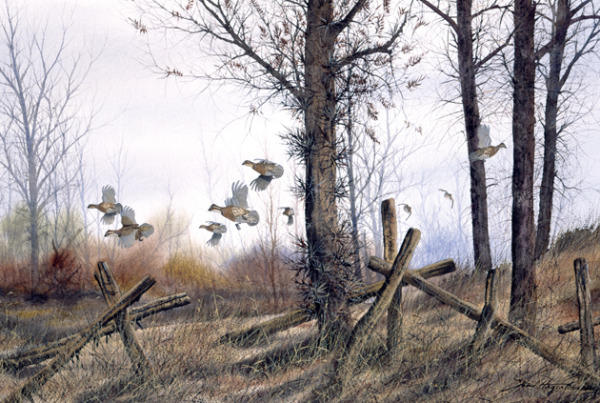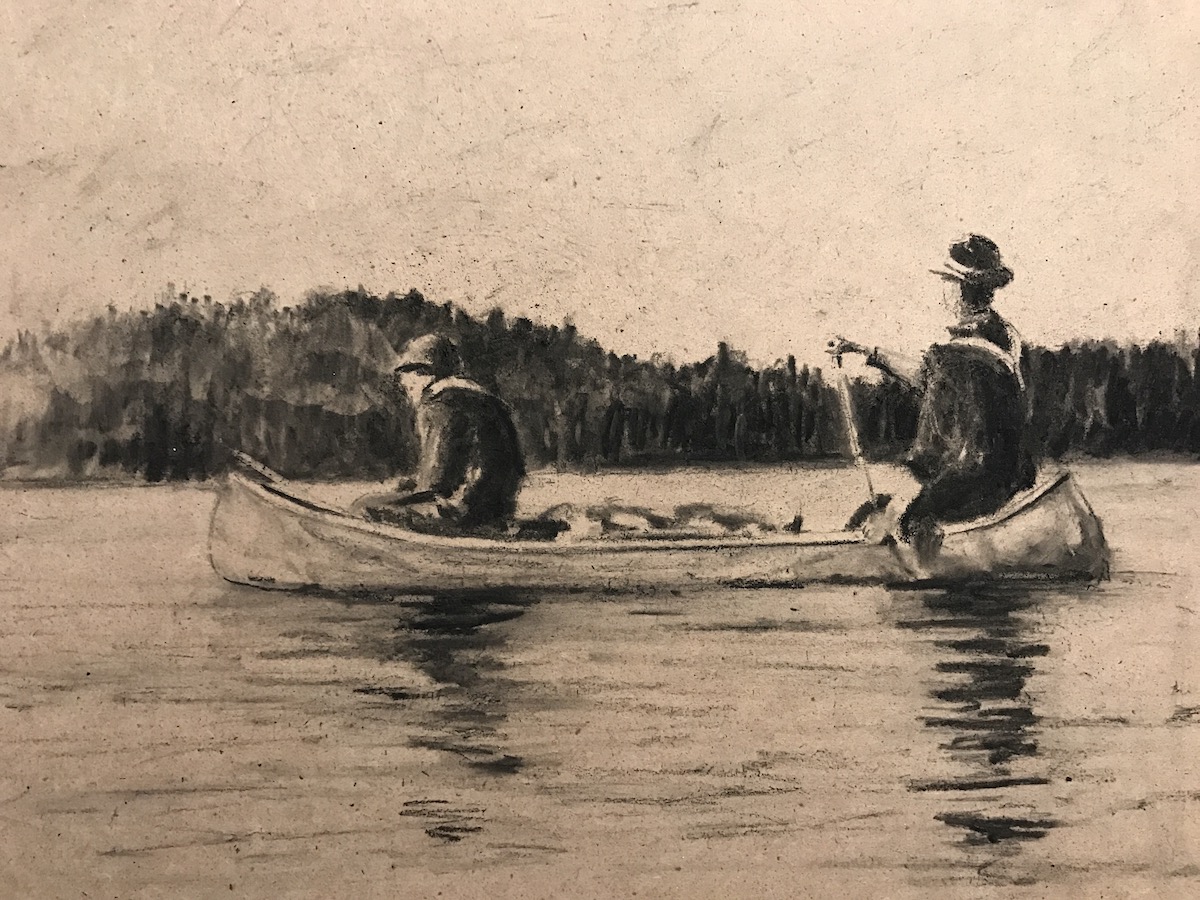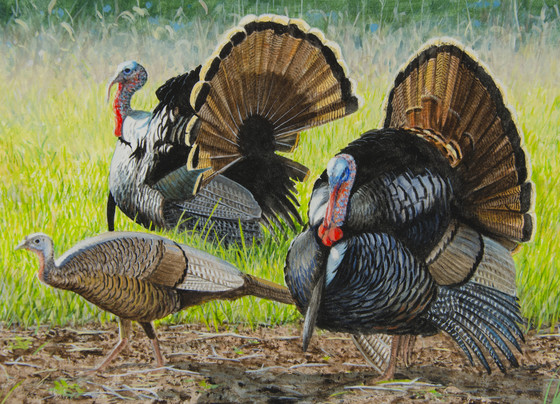“Dave was truly a sportsman’s artist and has done it all, both with gun and brush.”
With David Hagerbaumer’s passing in February of 2014, the world of wildlife art lost one of the great pioneer painters of the 20th century. Celebrated for his art and revered as a man, his legacy is both rich and enduring. He was indeed a remarkable man who over his 93 years enjoyed a remarkable career.
Dave Hagerbaumer’s art reflects the way he lived. A self-professed river rat, he never lost his love of the outdoors, which started as a boy roaming the swamps and river bottoms of Illinois. As one writer observed, Dave liked to “slug it out in the mud.”
Slugging in the mud is an apt description and indirectly touches on a chief characteristic of Dave’s art — namely his accurate portrayal of landscape and habitat. Adding to the excellence of his art is a sure knowledge of the terrain, not overlooking the hazards familiar to any seasoned duck hunter — the bad spots where you sink in over your boots in marsh muck or the sudden storms that can catch hunters off guard. These are the details that earned him widespread admiration and contributed to his legendary status as both artist and waterfowler.
As acclaimed gamebird artist David Maass once said of his good friend: “Dave was truly a sportsman’s artist and has done it all, both with gun and brush.”
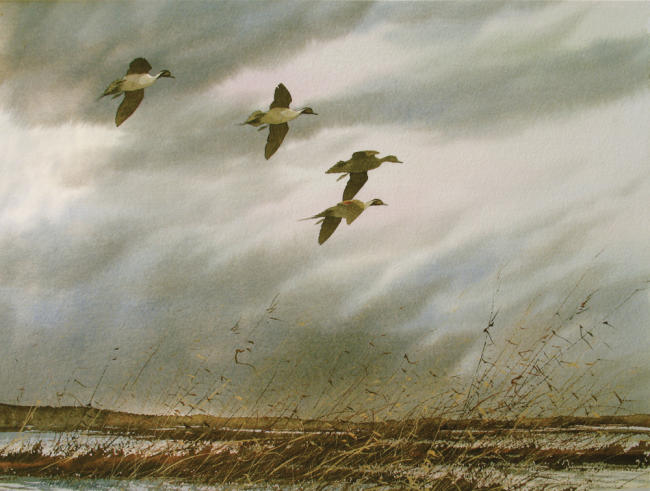
Dave’s paintings touch us with that which is basic and elemental, the attraction of his art lying in the arousal of primal satisfaction within each of us. It might be the sight of bluebills raking the decoys with afterburners at full thrust; mallards in that peculiar slip-sliding motion, adjusting their wings for a proper landing; the quick buzz and dash of teal; or pintails dropping in soft descent against a graying winter sky. In essence, Dave’s paintings unite birds, landscape, and viewer in a tapestry of perfect harmony.
During his lifetime, Dave showed great versatility in his art, mostly stylistic variations reflecting changes in attitudes and goals. Many earlier paintings are minimalist works — serene, contemplative, and marked by oriental simplicity, with birds portrayed against the sky in austere brevity and elegance. With the viewer kept at a distance, they reflect a more formal nature compared to the inviting drama and intimacy of later works.
Whatever the mood — quiet and reflective or vigorous and dynamic — by consensus it is generally acknowledged that Dave’s watercolors of waterfowl are without peer. They are distinctive and immediately identifiable, and while others have tried to imitate his style, none have succeeded.
Dave’s fame rests mostly on his watercolors, but his black-and-white etchings, drypoints, and drawings are an important part of his overall work. Along with his paintings, they reflect a grand odyssey, a great adventurous exploration of all the places hunted, the waterfowl pursued, and the various upland birds brought to hand.
Notable too are his sketches of duck shacks and blinds, an indelible record of disappearing markers from a bygone era, all imbued with a sense of wistful nostalgia and timelessness. They speak of the author’s undiminished enthusiasm for all that held him captive and enthralled for a lifetime.
Born in 1921 in Quincy, Illinois, Hagerbaumer grew up during the depression, an adventurous boy who spent all of his time hunting, trapping and fishing, enjoying a freedom scarcely imaginable today. These were magical, formative years, instilling in him a great love for the outdoors and a beginning urge to sketch and paint the wildlife around him.
At the outbreak of World War II Dave joined the Marine Corps where he saw duty in the Pacific Theatre. Following discharge in 1946, he started Custom-Bilt Decoys while studying art at San Diego State College. With the help of Roy Mason, a talented watercolorist and mentor, Dave quickly developed his own painting skills, selling his art on weekends at Balboa Park.
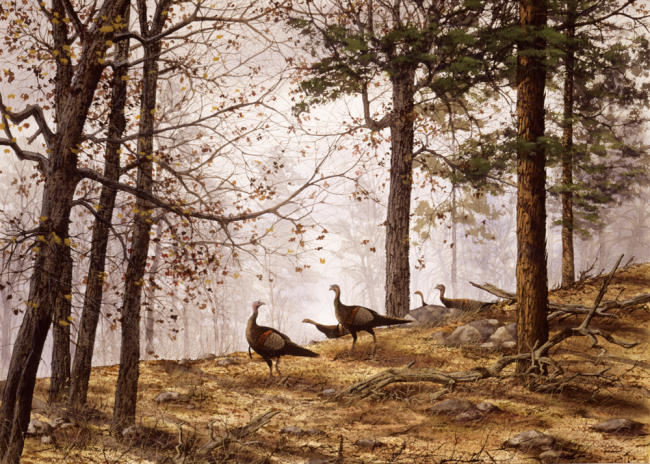
Dave’s commercial success began when he connected with Ralph Terrill of Crossroads of Sport in New York City. Their 1956 catalog offered the first Hagerbaumer watercolors for sale—four prints published by Frost & Reed in England. The edition sold out quickly as did another set of four waterfowl prints the following year.
By 1969, with each new print edition adding to his growing reputation, the catalogs were referring to him as “the genius of the meticulous,” noting that he “ . . . has progressed to the point of being one of America’s truly fine watercolorists.”
Before long Dave stood next to the most noteworthy sporting artists of the time, including Ogden Pleissner, A. Lassell Ripley, Carl Rungius, Francis Lee Jaques, and Lynn Bogue Hunt.
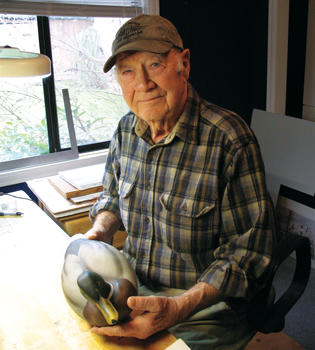
David Hagerbaumer was 89 and still going strong in 2009 when the author took this photograph of the artist holding one of his Custom-Bilt decoys.
A benchmark of Dave’s success came in 1972 with the publication of Selected American Game Birds, containing what many believe are some of his finest work.
Dave regarded the 1980s as his most productive and profitable period, during which he saw steadily increasing sales of his prints and a heightened demand for his paintings. (He was a very fast painter who produced an estimated 2,500 to 3,500 original works during his lifetime.)
Along with his painting he illustrated a number of books, several written by Worth Mathewson, and two of his own, The Bottoms (1987), and Waterfowling These Past Fifty Years—Mostly Brant (1998). Dave’s dedication in this book includes an eloquent passage: “to the little sea geese with whom I’ve kept vigil on many the lonely bay.” Both books have become highly sought-after classics.
Dave’s work also appeared in The Art of a Sporting Life and Sporting Images (Skagit River Press, 2009), a comprehensive and acclaimed two-volume set featuring his etchings, drypoints, and pencil drawings, along with hundreds of his paintings.
Note: A special thanks to William Webster for providing the images for this article. Bill was a longtime friend and hunting companion of the artist. Indeed, it was just after a 1967 grouse and woodcock hunt with Hagerbaumer and fellow artist David Maass that Bill founded Wild Wings, Inc. in Lake City, Minnesota.
This is an excerpt from the May/June 2015 issue of Sporting Classics.
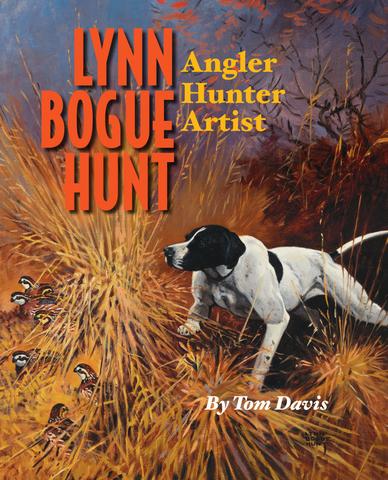 Acclaimed wildlife artist Lynn Bogue Hunt, who illustrated more national magazine covers than any other artist in history, is the focus of a beautiful new coffee-table book from Sporting Classics.
Acclaimed wildlife artist Lynn Bogue Hunt, who illustrated more national magazine covers than any other artist in history, is the focus of a beautiful new coffee-table book from Sporting Classics.
Angler, hunter, and artist, Lynn Bogue Hunt was America’s most popular and prolific outdoor illustrator of the mid-20th century—the “Golden Age” of the American outdoors. He painted a record 106 covers for Field & Stream; illustrated dozens of books on waterfowling, upland bird hunting, and saltwater fishing; designed the 1939-’40 Federal Duck Stamp; and was described by his friend Ernest Hemingway as “the finest painter of game birds that we have in America.”
Lynn Bogue Hunt — Angler, Hunter, Artist showcases the complete collection of Hunt paintings acquired by New Jersey sportsman Paul Vartanian. Not only is it the world’s largest collection of Hunt paintings, drawings, and memorabilia, but the largest and most complete collection of the work of any major sporting artist. Buy Now

